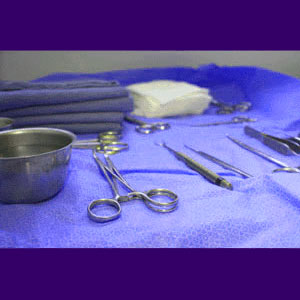
Kyphosis treatment is rarely necessary, since this abnormal front to back thoracic spinal curvature condition is not usually symptomatic in its more conservative forms. The normal thoracic spine demonstrates a kyphotic curve. This helps to balance the vertebral column and act as a shock absorber. Sometimes, this normal curve becomes exaggerated or decreased. These conditions are known as excessive kyphotic curvature or hyperkyphosis, as opposed to the loss of curvature, named hypokyphosis.
Atypical hyperkyphosis is an curvature that most commonly affects the upper back, but can also rarely occur in the sacrococcygeal region, as well. This condition is sometimes referred to as hunchback, round back or humpback, but these derogatory terminologies should never be utilized. Some patients suffer hypokyphosis, also known as flat back or straight spine. These conditions are not inherently painful or dangerous in their minor and moderate expressions. Many people have an excessive or reduced kyphotic curvatures and do not suffer any symptoms at all. However, when abnormal kyphosis is severe, pain may develop, often accompanied by neurological dysfunction in the worst of circumstances.
This dialog examines circumstances explaining the need for kyphosis treatment, as well as the simple fact that most cases of unusual kyphotic curvature do not require any treatment whatsoever.
Causes of Kyphotic Curvature
The following factors can all contribute to an increase or loss in typical kyphotic curvature in the upper back:
Bad posture may be characterized by rounding the shoulders forward, slumping or letting the head hang down when seated or standing.
Congenital spinal irregularities may case or contribute to a loss of kyphosis or a hyperkyphotic state.
Osteoporosis is one of the more prevalent contributors to thoracic kyphosis loss and exaggeration, especially in senior citizens.
Kyphotic change can be a side effect of excessive lumbar lordosis or may develop due to scoliotic curvatures in the vertebral column.
Varieties of Atypical Kyphotic Curvature
Gibbus deformity is an exaggerated kyphotic curve that is very sharp and angular. It will cause a spinal protrusion that is noticeable, especially when bending forward.
Hyperkyphosis is another name for an exaggerated kyphotic curve, especially used to describe the condition in older adults. This diagnostic term is usually associated with osteoporosis.
Hypokyphosis describes a deficient thoracic curvature or a complete loss of normal thoracic curvature.
Scheuermann’s Disease is a condition that is mostly diagnosed in the early teens. It is characterized by a prominent forward projection of the head.
Diagnosis of Kyphotic Curvature
Diagnosis of significant and visualized kyphotic conditions will be made by a physical exam. X-rays and/or spinal MRI will be taken to determine the extent of curvature and any neurological consequences that might present themselves due to changes in the normal degree of curvature. The angle of curvature will be measured using the diagnostic films and this will help to determine the proper type of kyphosis therapy, if any are indicated at all.
Many minor kyphosis issues are not diagnosed for years or even decades if they do not show any outward physical characteristics. Many elderly people are surprised to learn that they have demonstrated mild front to back curvature issues for years when the evidence of these conditions is found during routine imaging performed later in life.
Kyphosis Treatment Choices
Most cases of abnormal kyphotic curvature are not painful or symptomatic. In rare instances of severe curvature, moderate to severe symptoms might be experienced. In these circumstances, treatment should be administered by a medical specialist in atypical spinal curvature. Three of the most popular conservative treatment modalities include:
Pain drugs might provide symptomatic relief, but do so at the cost of good health. Many drugs are extremely harmful, especially when used for a long time.
Physical therapy is useful to maintaining functionality and range of motion, despite often degenerative kyphotic changes.
Back braces might provide the ability to slow down a degenerative curvature or even stabilize it. A brace is unlikely to provide the hope of reversing an existing curve in an adult.
Surgical Kyphosis Treatment
Spinal surgery might be necessary if the curvature is severe or if there are serious neurological impairments, such as verified pinched nerves. There are several procedures used to correct abnormal kyphotic curvatures. The proper procedure will depend on the root cause of the kyphotic condition. The most commonly used operative correction is certainly spinal fusion.
All variations of kyphosis surgery are dangerous and have serious risks to consider. This is why operative interventions should always be held in reserve unless they are absolutely necessary from an objective viewpoint.
Kyphosis Treatment Tips
Most people with an abnormal kyphotic curvature do not experience any symptoms. If you are diagnosed with mild forms of this condition, and have been pain-free, relax. Most likely, you will remain pain-free. Do not let a doctor scare you into experiencing suffering simply due to a psychological conditioned response. It is all too common for a healthy and asymptomatic person to start experiencing discomfort after receiving a positive diagnosis of kyphosis. This is yet another example of the nocebo effect.
Patients who demonstrate significant and extreme versions of thoracic curvature alteration might require ongoing or invasive kyphosis treatment. This is usually the case when spinal stability is threatened or organ damage seems likely or proven.
Surgical correction of serious abnormal kyphosis diagnoses is one of the least successful of all spinal procedures. Patients are known to suffer greatly from spinal fusion and postoperative complications abound. However, if this is the only path, then at least do all you can to increase your chances for a positive outcome. Be sure to hire the best doctor and choose the ideal approach which will minimize anatomical damage while still achieving the surgical goal.






